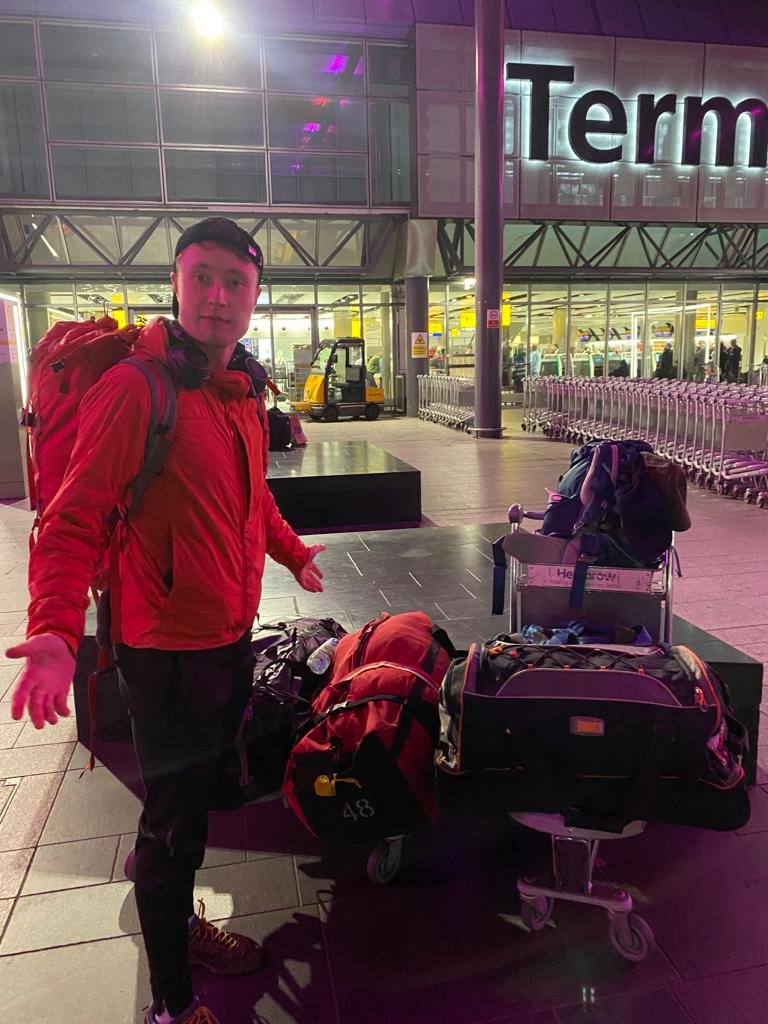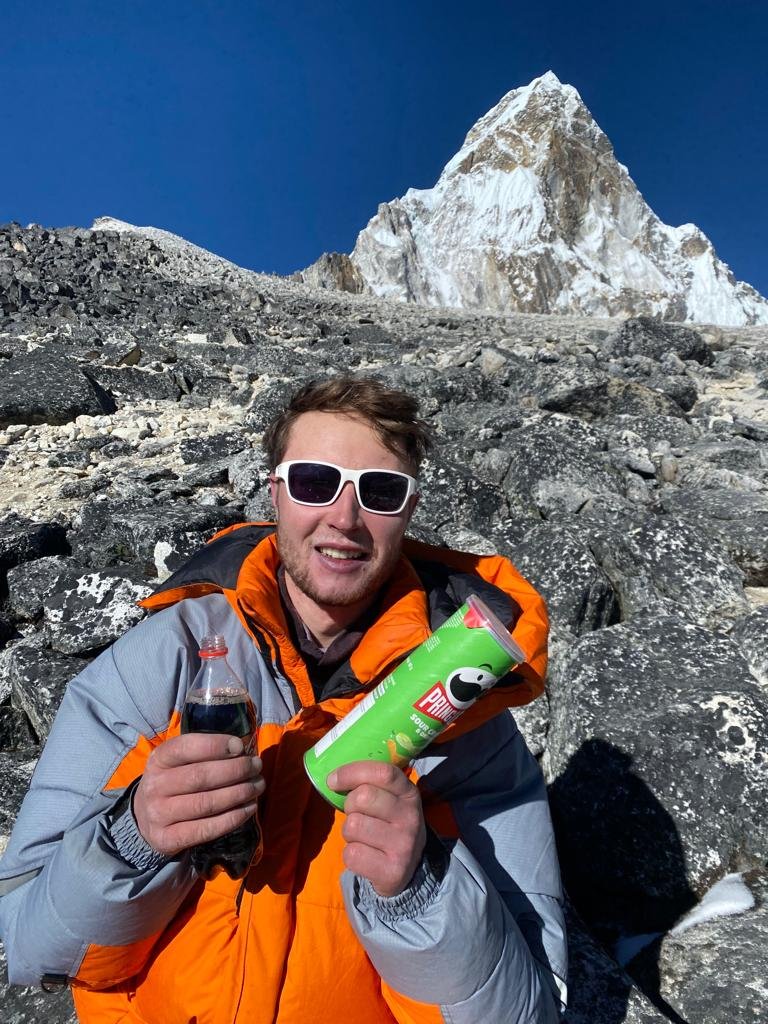10 things to take on a Nepal trekking trip
There are hundreds of packing lists out there for trekking trips in Nepal but we wanted to share a list of 10 extra things that you may not have thought of that should be on every packing list. Disregarding clothes and my toothbrush, these were the most helpful items I had in my pack during the 4 weeks we were trekking in the Khumbu region.
What can you find in our huge bags?
1. Portable charger
This has to be top of the list. A good portable charger will be a lifesaver (well, potentially, but more likely a saviour from a hole in your wallet). After the first few days, most tea houses will ask for a payment to charge electronic devices and this can add up, especially as batteries run low quicker in the cold. I wrapped my portable charger in a thick sock, I’m not sure if that made a difference. Chris wasn’t convinced but feel free to give it a try!
Waiting for Chris who was climbing Ama Dablam: kindle, journal, True Start coffee bags, snacks, Nalgene water bottle.
2. Nalgene water bottle
Another absolute must. Nalgene water bottles can hold boiling water without melting and will stay warm for a while, and even longer in an insulated case. At night it can be chilly especially out of peak season and your muscles may be aching in the evenings so a hot ‘water bottle’ will make all the difference. The boiling water is potable so once it has cooled, you can drink it.
3. Kindle/reading device
One thing I absolutely loved about trekking in Nepal was how much down time I had to read after a day on the trails. WiFi is limited so spare time is spent eating, looking at the views, chatting with others and reading. A kindle was perfect because I didn’t have to use a torch or carry a library in my bag. However, if you are set on reading ‘real’ books, many of the teahouses do have book exchanges, although I can’t guarantee what languages you will find!
4. Journal and pencils
Another thing I loved to do during the trip was writing in my journal. I reflected on each day, writing an overview of what I had seen, whom I had met and the route we had travelled. I did try sketching one day as for some reason I believed I would suddenly be able to draw, sadly this was not the case. But if you do like to draw, bring along some pencils and give it a go, the views are truly inspiring.
5. Chocolate /dates
The first few days I didn’t really eat many snacks because I was so full from the dahl baht and the excitement of three local main meals a day on offer. However, after a week or so, your body might be getting a bit tired, you are probably reaching higher altitude, having longer days or maybe you’re just tired of stuffing yourself silly with dahl baht. Having some familiar, tasty and high calorie pick me ups in the bottom of your bag can be a real godsend.
Chris was happy with his pringles and coca cola after summiting Ama Dablam
Soreen maltloaf
Laura’s favourite snack, a happy treat on her birthday!
6. Tissues/toilet paper
Runny nose, constant wee breaks and no toilet paper in the tea houses means you’ll get through a lot of tissues. So stock up and chuck in a few extra packs for good luck. Also, remember to bring some ziplock bags and take any used tissues down with you to keep the mountain clean.
7. Sunglasses
Invest in a pair of good category 4 sunglasses. You will likely be wearing these 99% of the time we are trekking and are essential, some would even say PPE. The sunlight is really intense and can lead to headaches or even eye damage if you don't take it seriously.
8. Buff
A versatile piece of clothing which can be used as a scarf, headband or even face mask. The Khumbu region can be a dusty place and even dustier when passed by yak, donkeys or jopkes. A lightweight buff or neck scarf that you can pull around your mouth and nose when these animals kick up clouds of dust on the trail ahead will be a throat saver! Also as you get closer to the glacier, it will become more dusty so to prevent picking up the infamous khumbu cough use a buff diligently, you won’t regret it! It can also be helpful to prevent the back of your neck from getting sunburnt so it really is a true essential.
On the trail with buff and category 4 sunglasses
9. Bar of handwashing soap
Bring a bar of soap to wash your clothes with. The more lightweight you pack the better but this does mean you will inevitably have to wash your clothes at some point. A bar of soap is much more effective than liquid hand washing soap and less likely to leak all over your bag (can you tell it happened to me..?). Better still, make sure this is biodegradable as it will inevitably end up washed away into one of the local rivers!
10. Wet wipes
You might go a few days without washing but you probably won’t go a day without sweating so wet wipes are the unsung hero in keeping on top of your personal hygiene and some sense of feeling human.
11. Multivitamin tablets
Whoops I know I said 10, but I couldn’t miss this last item off the list. Dissolvable multivitamin tablets, available from any UK supermarket, are really amazing at making sure you stay healthy throughout the trek. If you drop one in a litre of water each morning it's also a great way to get you drinking straight away and start the day hydrated!
Chris handwashing his clothes in Thame
A few extra things to add, but I already got to 11:
A flannel for washing, makes it quicker, easier and less messy
Cold and flu tablets or lemsips in case you do pick up the khumbu cough
Good down coat for warmth and cosiness - but this will be covered in our essential packing list of course!
Do you have any suggestions, leave your thoughts in the comments section below!






